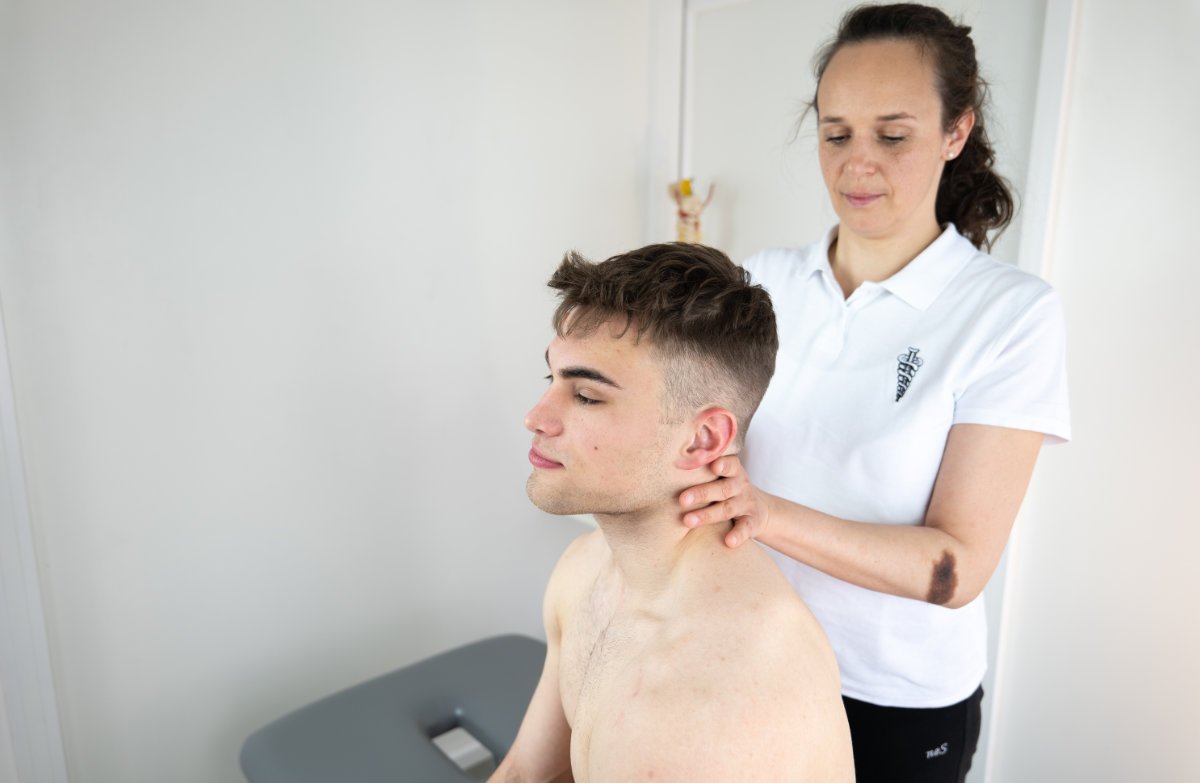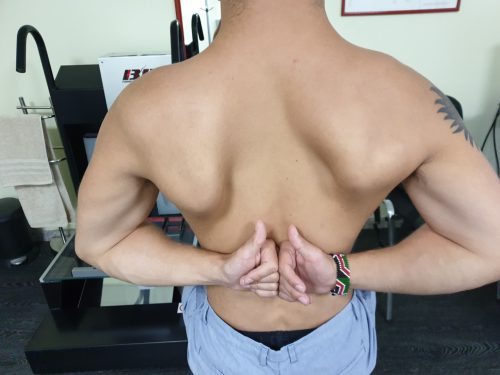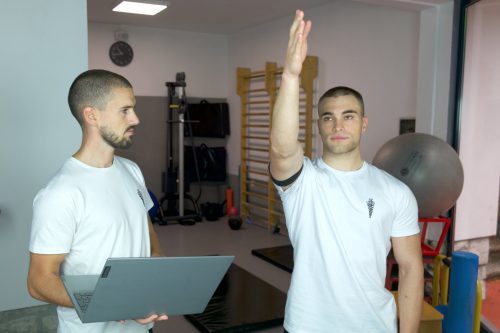Imaging diagnostics (MRI, X-ray, ultrasound, CT…) is of great assistance in diagnosis, but when taken for granted, it can also be a major obstacle, as shown by the following example from our practice.
Neck and Shoulder
Description
A few weeks ago, a 48-year-old woman sought help for left shoulder pain she had been experiencing for two years. X-rays indicated the presence of calcifications in one of the deep shoulder tendons, and based on this finding, she underwent physiotherapy at another institution, followed by shock wave therapy, all in an attempt to reduce the symptoms in this particular case. Cortisone injections directly into the shoulder were also attempted, all to no avail. One of the options considered was surgical removal of the calcifications.
During the examination, shoulder tests did not produce consistent results, meaning that the condition did not correspond to what would be expected with symptomatic calcifications. Ultrasound, especially its dynamic variant, indicated the absence of clear inflammation and normal tissue sliding when raising the arm. In other words, the calcification exists but does not cause any trouble. Similar to how a pebble in a shoe can cause discomfort but doesn’t necessarily, depending on where it is at that moment. Conversely, movements of the cervical spine were limited and some were painful. Neurodynamic testing indicated pressure on the exit of one of the nerves from the cervical spine, thus suggesting a possible cause of shoulder pain. A total of 4 physiotherapies based on mobilization techniques, neurodynamics, and trigger point stimulation were performed, completely eliminating the discomfort and pain in the shoulder.
This example, like many similar ones, shows how one of the great French surgeons was right when he stated that he cannot treat images, because there is Photoshop for that, but he can only treat the patient and their discomfort. In this sense, imaging diagnostics are of great help, but in the case of locomotor system disorders, a diagnosis can only be confidently made when the findings of physical examination and imaging fully align.






